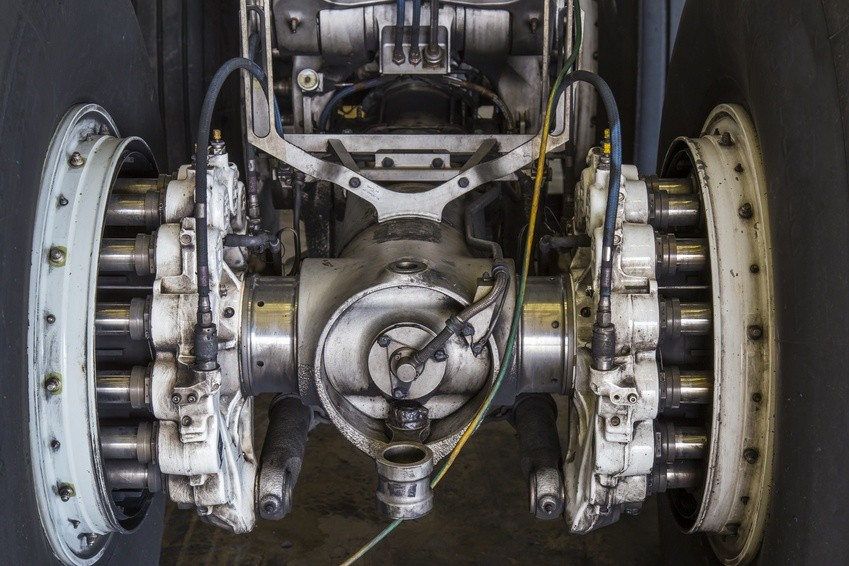Imagine, you’re a pilot in your own plane, cruising on a beautiful day. You line up your approach to the airstrip and flip the switch to actuate the hydraulics for the landing gear to deploy. Suddenly, a low pressure warning appears and the landing gear won’t deploy. Now you have a problem! Amongst the grumblings under your breath will likely be a few unsavory comments about the engineers that designed that hydraulics system. Well, that’s us; and that pilot we’re imaging, that’s our client. They deserve to have a reliable and flawless landing, don’t they? Therefore, it’s on us to design a hydraulic system that can achieve just that, but how? Well the specifics, components, and design are across the board from plane to plane; however, there is one point that is guaranteed to be universal for our endeavors, hydraulic pressure testing! We will all test and test, then try to damage the system and test again! So naturally, we need a pressure sensor that can consistently and accurately record the conditions in our hydraulics system as we fine-tune all the details. Well we have a sensor that can do exactly that and for the remainder of this article we will explore the capabilities of the STS high precision pressure transmitter ATM.1ST.
As we begin to develop our hydraulic pressure measurement regimen, we must first determine the exact data we wish to collect. As we all know, ‘pressure’ is a very broad term to use in a hydraulic system and has very little meaning on its own. Are we referring to the accumulator pressure, pump delivery pressure, the regulator pressure, or perhaps the relief pressure? That decision is up to you, but thankfully STS has developed a series of pressure transmitters that can collect data in any of these sub-components. What do we mean by that? Well, the STS high-precision pressure transmitter ATM.1ST is designed with a modular and adaptable approach. We, as the engineers, can cherry-pick the features and capabilities for every sub-component of the sensor to ensure that every last one is perfectly suited for the environment that it will encounter over the course of the test.
Let us now break down these sensor modules for a moment. First, we have our choice of materials for nearly every part of the sensor to ensure strength and durability. For example, the housing and transducer can be constructed from stainless steel or titanium depending on the burst pressure we must withstand amongst other factors, and this will in turn be determined from your particular hydraulic setup.
However, our material selection is not limited to the housing. We also have the power to pick and choose the seal material for our sensor. The selections in this department include Viton, EPDM, Kalrez, and NBR. Naturally, the hydraulic fluid will be consistent throughout the landing gear system; therefore, once we determine the seal material that will have the best interaction with the fluid that particular material can be guaranteed to function throughout the system. Another factor to be kept consistent throughout our test setup is the overall accuracy of our pressure sensors. Luckily, STS grants us leverage over that characteristic as well with the high precision sensors of the ATM.1ST line. We have 0.25%, 0.1%, and 0.05% FS to ensure that our data collection is both accurate and consistent throughout the entirety of the test.
The last two modular selections that are prudent to our landing gear testing are the electrical and process connections. In the electrical world we have FEP, PUR, and PE cables to select from, along with a range of different connectors. As for process connections, our diaphragm, DIN, and other specifications are entirely at our discretion. While the sheer volume of different combinations may seem slightly overwhelming at face value, they grant us the capability to piece together a pressure sensor that will slide into our test setup seamlessly without driving any special setup or design changes.
Now let us return to our landing gear testing. As we develop and test the hydraulic system to achieve flawless landing gear operation we are going to need data from several locations within the system. As mentioned above, we have the accumulator that acts as a damping device of sorts to smooth out any pressure variations within the system. Naturally, we as the engineers need to know what those variations are exactly. Therefore this seems to be a perfect location for a test sensor!
On the subject of pressure maintenance, the regulator also falls squarely into this category. As the pressure fluctuates due to valves opening and closing or any irregularities in the system, the regulator kicks in to ensure that the system pressure remains within the specified range. Once again, this is another crucial component to keep an eye on as we develop our landing gear, and we now have the resources to select a perfectly customized pressure sensor to slide into the system and accomplish just that with precise measurements and easy to install electrical connectors.
In review, we are tasked to develop a reliable landing gear system via a rigorous curriculum of testing. However, the hydraulic system of such a mechanism is extremely diverse in terms of components and potential locations for sensors. Thankfully for us, STS has produced a reliable little powerhouse in the ATM.1ST pressure sensor that allows us to have nearly complete jurisdiction over all aspects of the sensor; including materials, accuracy, sealing, and electrical connectors. Long story short ladies and gentlemen, this high-accuracy sensor allows us to devise a streamlined and robust testing process where our test sensors complement our setup, and do not dictate it.
